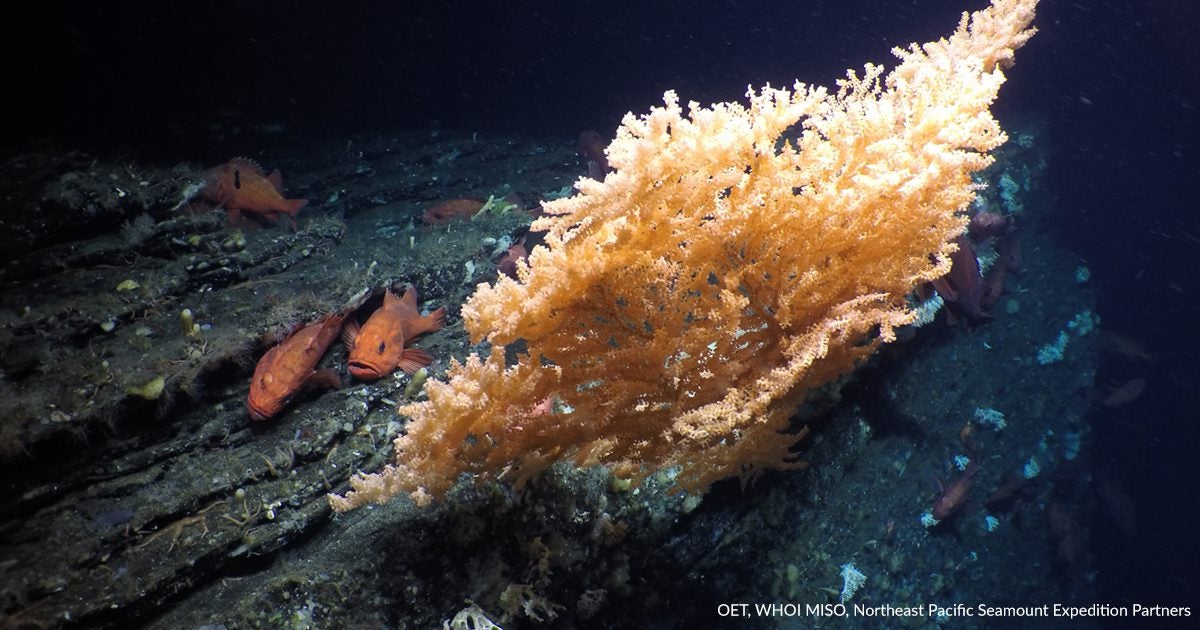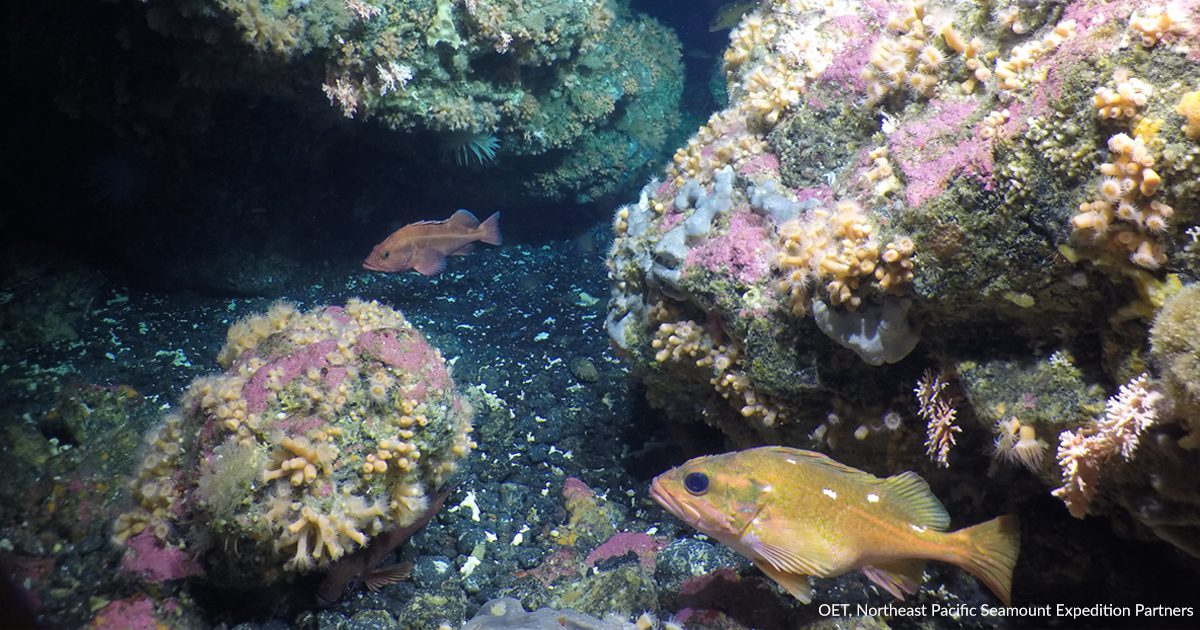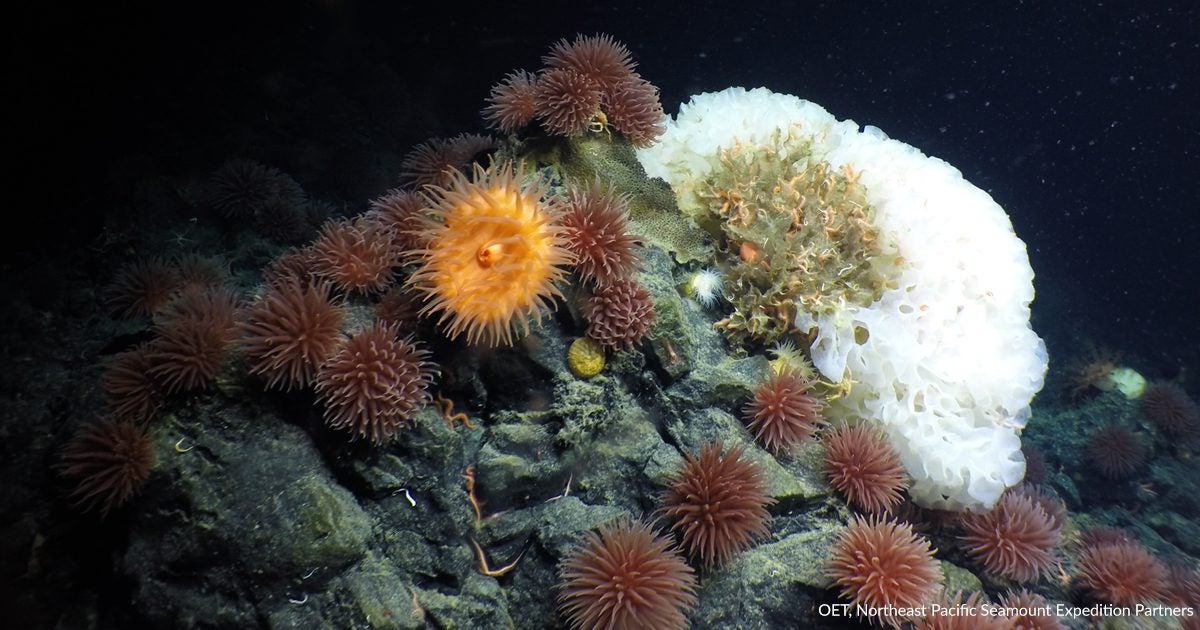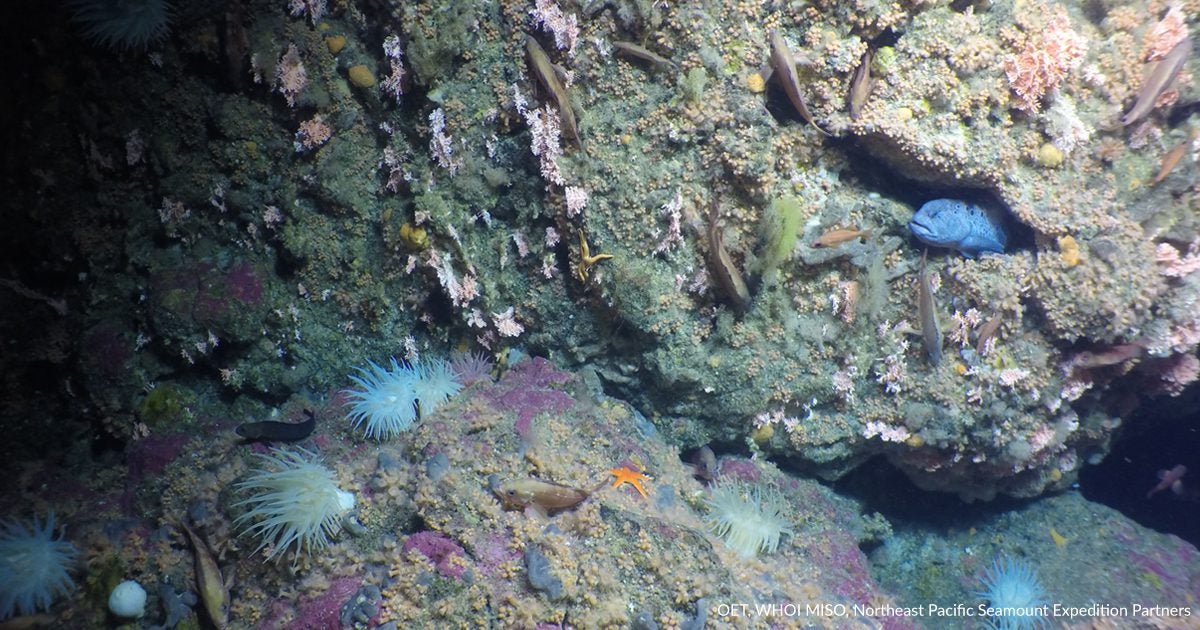November 25, 2020
Climate Change and Seamounts: Why Our Call for Protection Just Got Louder
Estimated reading time: 0 minutes
BY: Alexandra Vance
Topics: Protect Marine Habitat
Two years ago, Oceana Canada and its partners set out on the Northeast Pacific Seamounts Expedition, surveying incredible underwater mountains, called seamounts, that rise from the seafloor off the coast of British Columbia. A group of researchers have recently published a paper about these unique seamount ecosystems and the impact of climate change.
Acidic waters and choking mountains
The researchers found that climate change is causing rapid oxygen loss at both the bottom and top of the seamounts and that the surface waters are simultaneously becoming more acidic. These changes surprised even the researchers, who noted that the global ocean has lost about 2 per cent of oxygen while these seamounts have lost a shocking 15 per cent. All animals require oxygen to breathe – even underwater – so these findings have major consequences for the marine life that call these seamounts home. The corals, brittle stars, rockfish and other wildlife unique to these seamounts are facing serious threats with some species that only live in these areas potentially facing extinction. The growing evidence of how important seamounts are means we must act to protect them and ensure their survival.
Oceana Canada is calling for the immediate designation of the Offshore Pacific Marine Protected Area (MPA) to protect the seamounts off the coast of British Columbia, show your support by adding your name.

The sea’s tallest mountains
Seamounts can be found all around the world and are hotspots for biodiversity, hosting a greater than average number of marine species and habitats. Some of these species that call seamounts home are so unique that they can only be found on certain seamounts.
The seamounts off the coast of British Columbia are the only place in Canada where these unique underwater mountains can be found. Some of the world’s tallest seamounts live in this area, towering over 3,000 meters in height from the seafloor reaching within just a few hundred meters of the ocean’s surface. These seamounts are formed by volcanic activity, creating complex structures that coral, sponges and other species form on, making habitat for many other animals like rockfish and sea stars. The transition from deep-ocean to shallow along the sides of a seamount create unique and dynamic habitats.
Swimming up a seamount
Imagine if you could swimming in the ocean depths where strange dark-adapted animals glide alongside you. Ascending the seamount, you climb upwards toward its peak where you can start to see more familiar animals, and even plants, that are more typical of coastal waters. That’s what Oceana Canada, along with its partners, did in 2018, on the Northeast Pacific Seamount Expedition. Using an ROV (remotely operated vehicle) we documented life on these incredible underwater mountain ranges from the seafloor all the way to the mountain peak.
The expedition
Oceana Canada in partnership with the Haida Nation, Fisheries and Oceans Canada, and Ocean Networks Canada surveyed the seamounts to better understand the species and help inform their protection. Together, we vertically surveyed two of the tallest seamounts, named Dellwood and Union, and discovered six new knolls (underwater mountains less than 1,000 meters tall). What we found was truly breathtaking – vast coral and sponge gardens reaching many meters high, several species of rockfish (including the yelloweye rockfish that can live to over 100 years old!) and lots of sea stars, sea urchins and seaweeds. The evidence collected during this and other expeditions by our partners highlight the complexity of seamount ecology and the unique species, as well as further demonstrating the conservation value of protecting them.
Relive the Northeast Pacific Seamount Expedition, with photos and videos of this incredible underwater world, at ProtectOceans.ca and join us in calling for the protection of seamounts.

References:
1. Rowden et al., 2010. Paradigms in seamount ecology: fact, fiction and future. https://onlinelibrary.wiley.com/doi/abs/10.1111/j.1439-0485.2010.00400.x
2. Offshore Pacific AOI. https://www.dfo-mpo.gc.ca/oceans/aoi-si/offshore-hauturiere-eng.html
3. Ross et al., 2020. Rapid deep ocean deoxygenation and acidification threaten life on Northeast Pacific seamounts https://onlinelibrary.wiley.com/doi/10.1111/gcb.15307



